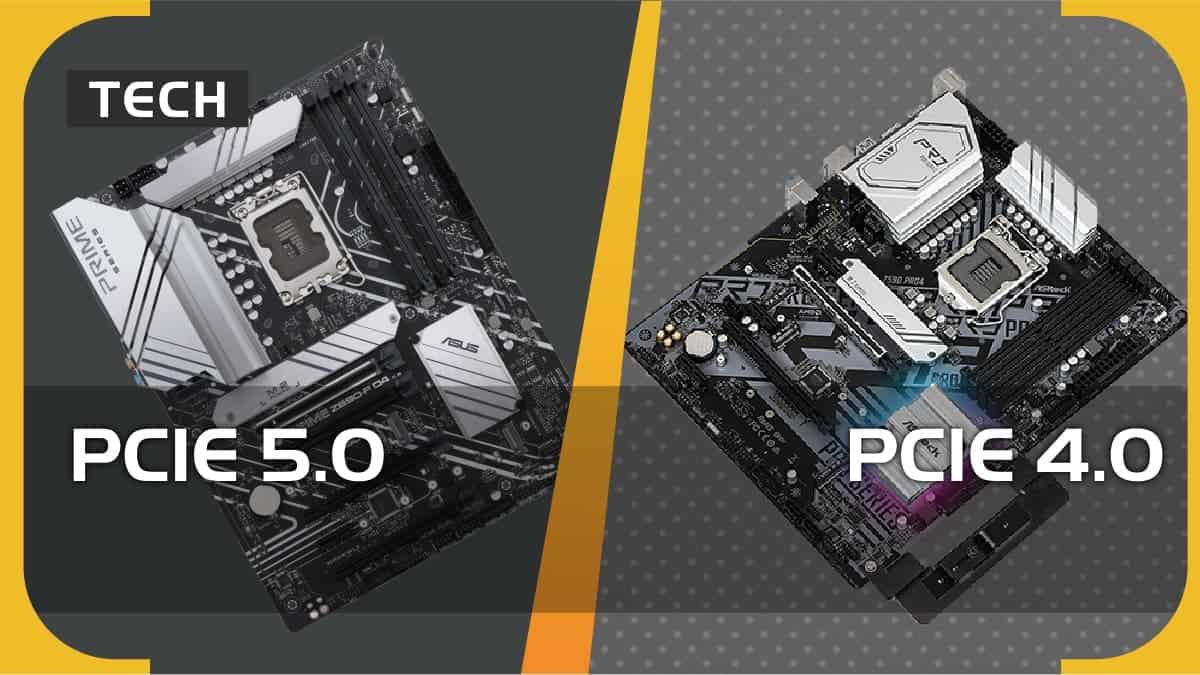Video Gamer is reader-supported. When you buy through links on our site, we may earn an affiliate commission. Prices subject to change. Learn more
With PCIe 5.0 now available with the Ryzen 7000 series CPUs, we’re asking what’s new, and what the key differences are between PCIe 5.0 vs PCIe 4.0.
PCIexpress, more commonly referred to as PCIe is an interface standard that allows your CPU to communicate to your motherboard via a number of slots. Before we get stuck into what PCIe 5.0 has to offer, let’s get up to speed on what PCIe does and how it works.
With the arrival of PCIe 5.0, you can expect double the bandwidth which translates to a boosted performance on your graphics card.
What is PCIe?
PCIe is an interface standard that is present in a motherboard.
PCIe allows devices such as graphics cards, SSDs, sound cards, USB hubs and more to communicate with your CPU. The generation of PCIe your motherboard has determines the bandwidth available to the devices which are connected.
PCIe 5.0 vs PCIe 4.0 – what’s the difference?
PCIEe 5.0 is twice the speed of PCIe 4.0, boasting a top transfer rate of 32 GT/s (gigatransfers per second).
If you want to see a boost to your graphics card performance, you’ll need to have an a AMD Ryzen 7000 series CPU which is based on the new Zen 4 architecture for PCIe 5.0 to be worth it.
Current graphics cards won’t consume the total bandwidth of PCIe 4.0, so upgrading to the latest generation of CPU is crucial here. Once you’ve got this is sorted, you can expect support for the higher speed DDR5 memory which basically means you’ll have faster storage speeds and graphics rendering.
Bandwidth
Every time a newer version of PCIe comes out, you can expect the bandwidth available per lane to double which translates to a higher, more powerful performance.
| Lanes / Bandwidth | PCIe 4.0 | PCIe 5.0 |
| x1 Bandwidth | 2 GB/s | 4 GB/s |
| x2 Bandwidth | 4 GB/s | 8 GB/s |
| x4 Bandwidth | 8 GB/s | 16 GB/s |
| x8 Bandwidth | 16 GB/s | 32 GB/s |
| x16 Bandwidth | 32 GB/s | 63 GB/s |
You’ll find most graphics cards require at least 8 PCIe lanes to reach their top performance level.
Lanes
PCIe lanes are the physical link between your PCIe supported device and motherboard.
CPUs & motherboards have a limited number of lanes, so upgrading your PCIe 5.0 will free up the number of lanes you have. Therefore, if you’re using a GPU that required 16 lanes to run at full capacity will be able to reach the same speeds with half the lanes. Pretty convenient, right?
When should I upgrade to PCIe 5.0?
It’s only worth upgrading to PCIe 5.0 if you have the most up-to-date storage devices and video cards which use PCIe 5.0 or 4.0 lanes. This will of course future-proof your PC set up, whilst also freeing up PCIe lanes.
It’s worth bearing in mind though that even though PCIe 5.0 is now available, next gen graphics cards like the RTX 4090 actually host PCIe 4.0 interface.
Below you’ll find SSDs which support PCIe 5.0 currently available.
- WD_BLACK 1TB SN850X NVMe Internal Gaming SSD – was
$179now $139 - SAMSUNG 980 PRO SSD 2TB PCIe NVMe Gen 4 – was
$379now $209 - Western Digital 1TB WD Blue SSD – was
$99now $69
A comprehensive PCIe 5.0 guide is also available via PCGuide here.
Which PCIe 5.0 CPUs are currently available?
As we mentioned at the beginning of this article, AMD’s Ryzen 7000 processors AND Intel’s 12th and 13th generation Core processors support PCIe 5.0.
Our friends over at WePC have got all bases covered with where to buy Ryzen’s 7000 processors here.
In the meantime, we’ve covered Intel’s 13th Gen CPUs and curated the best reviews to help you in the buying process.
